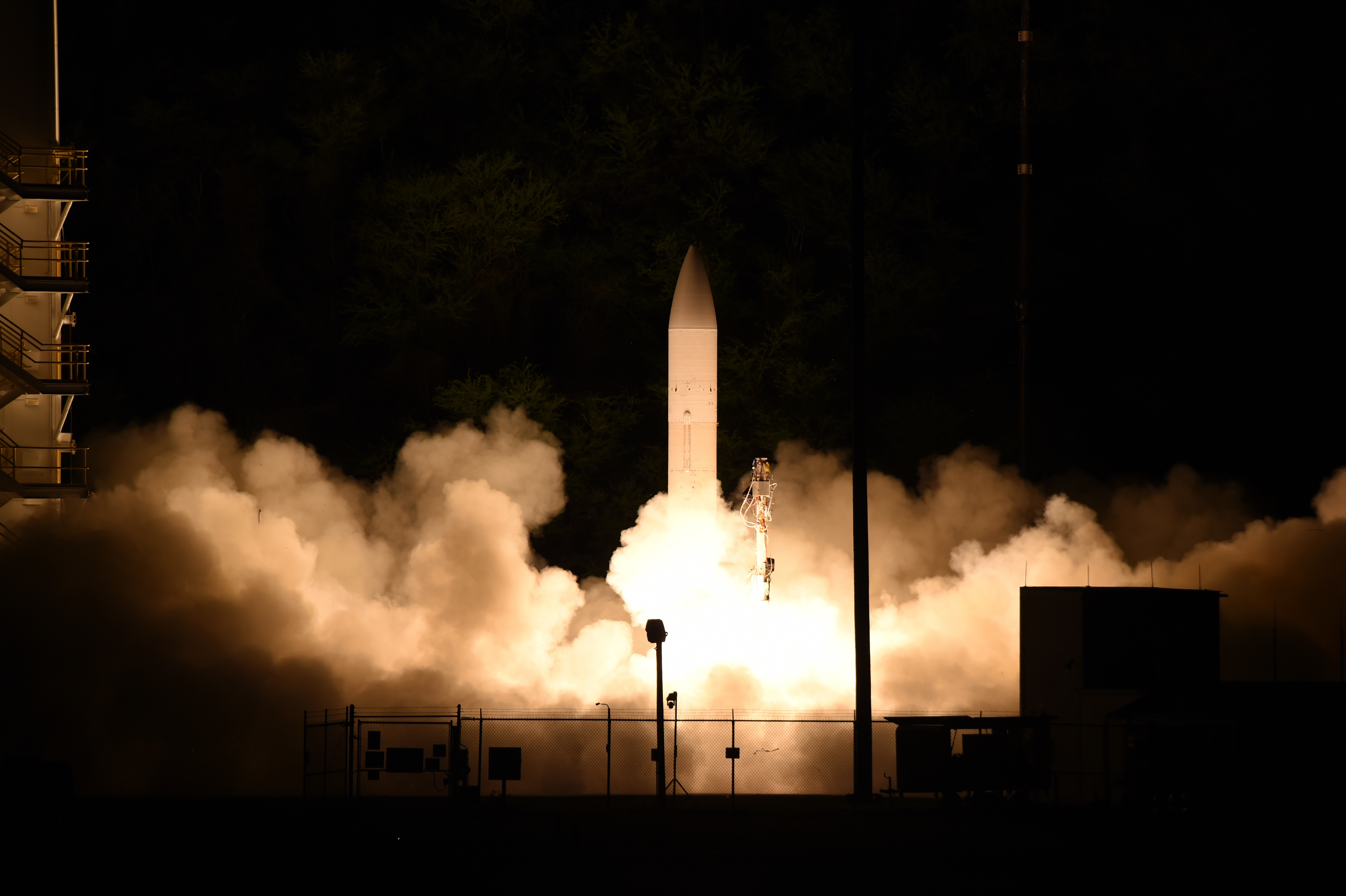
The Army and Navy scrubbed their latest hypersonic test flight due to a battery failure during a pre-launch check, the Navy’s top officer for strategic programs said Friday.
Vice Adm. Johnny Wolfe told the House Armed Services strategic forces subcommittee the test from the Cape Canaveral Space Force Station will get re-scheduled after the problem that caused the March 5 cancellation “is identified and corrected.”
“The services will leverage an ambitious joint flight test schedule to assess and improve the weapon system design and demonstrate performance against requirements,” Wolfe said in prepared testimony.
Wolfe and his Army counterpart, Lt. Gen. Robert Rasch, said the two services are on track to deliver “intermediate range strike capability” on land and at sea, and meet important milestones this fiscal year and in the near future.
The Navy will deliver the Common Hypersonic Missile (CPS) to an Army battery at Joint Base Lewis-McChord, Wash., this year, Wolfe said.
The battery has completed new equipment training, which included a demonstration that it was C-17 deployable, Rasch said. It’s also road-mobile. The Army designates the missile as its Long-Range Hypersonic Weapon (LRHW).
Hypersonic weapons, moving at least five times the speed of sound, can be delivered from high altitudes in a number of ways – from aircraft, from sea and from a ballistic missile. While not a “be-all and end-all, they are a highly valuable tool,” Michael White, principal director of the hypersonic office in the office of defense research and engineering, said at the hearing.
While the United States was a pioneer in the field, “China is now leading Russia” in this field and has built “a robust infrastructure for research and development,” said Paul Freisthler, the Defense Intelligence Agency’s chief scientist for science and technology. Beijing surprised the world in 2021 with a “round-the-world” test of its hypersonic capability development. China has “three hypersonic wind tunnels capable of operating at speeds of Mach 8, Mach 10, Mach 12,” he said.
He added that Russian President Vladimir Putin has boasted that Moscow developed a hypersonic weapon capable of speeds 20 times the speed of sound.
Subcommittee Chairman Rep. Doug Lamborn (R-Colo.) said at the start of the hearing that while the United States paused developing hypersonics at the end of the the 1980s, “Russia and China made the opposite decision. Instead of mimicking our restraint as we hoped, they developed and deployed increasingly sophisticated and numerous hypersonic capabilities of various types – including nuclear-capable and orbital hypersonic weapons.”
The Navy is planning a hypersonic test shot from USS Zumwalt (DDG-1000) in 2025 and from a Virginia-class Block V submarine starting in the early 2030s, Wolfe said. He said the naval platforms add stealth and increased survivability.
When asked if the continued investments in hypersonic weapons should continue, Wolfe said, “it’s the Navy view [that] this fills a need.”
Michael Horowitz, director of the Pentagon’s emerging capabilities policy office, added that hypersonics “expand the options” for conventional weapons that leaders have to deter conflict or “keep it from escalating.” He emphasized that the United States is not looking to arm hypersonic platforms with nuclear weapons.
Wolfe and Rausch cited the savings the partnered program has made in developing a common hypersonic glide body, booster stack and joint testing and experimentation.
“No single entity [in private industry] can build a hypersonic capability alone,” Rasch said.
Wolfe and Rasch noted that much of the early work in hypersonics took place in government laboratories.
Earlier this month, President Joe Biden issued a presidential directive that authorized the Defense Production Act to ramp up the hypersonics industrial base. A major goal of invoking the act is for the Pentagon to accelerate hypersonics programs that have shown promise in science and technology or research and development investments into production contracts.
Rausch and Wolfe said their services’ early partnering allowed industry to build up the necessary work force and the government to achieve economy of scale in the buy.
The Pentagon’s goal for the future with hypersonics is “to leverage common production practices,” identify the next generation technologies and “improve the throughput in test and experimentation” to more quickly field the systems and platforms, White said.
While subcommittee ranking member Rep. Seth Moulton (D-Mass.) and others pressed the panel’s witnesses for definitions of the Pentagon’s operating concept for hypersonic offensive weapons and active and passive defenses, most deferred the explanations to the follow-up classified session.
In prepared testimony, Horowitz said they are part of a mix of platforms and systems to deter an aggressor now or defeat one in conflict.
“The department is also making substantial investments in a broader array of capabilities, including long-range strike, undersea, and autonomous systems, in addition to hypersonics, that will ensure we can effectively deter through denial. For some mission sets, hypersonics can play a critical role in U.S. capabilities,” Horowitz said in his written testimony.





